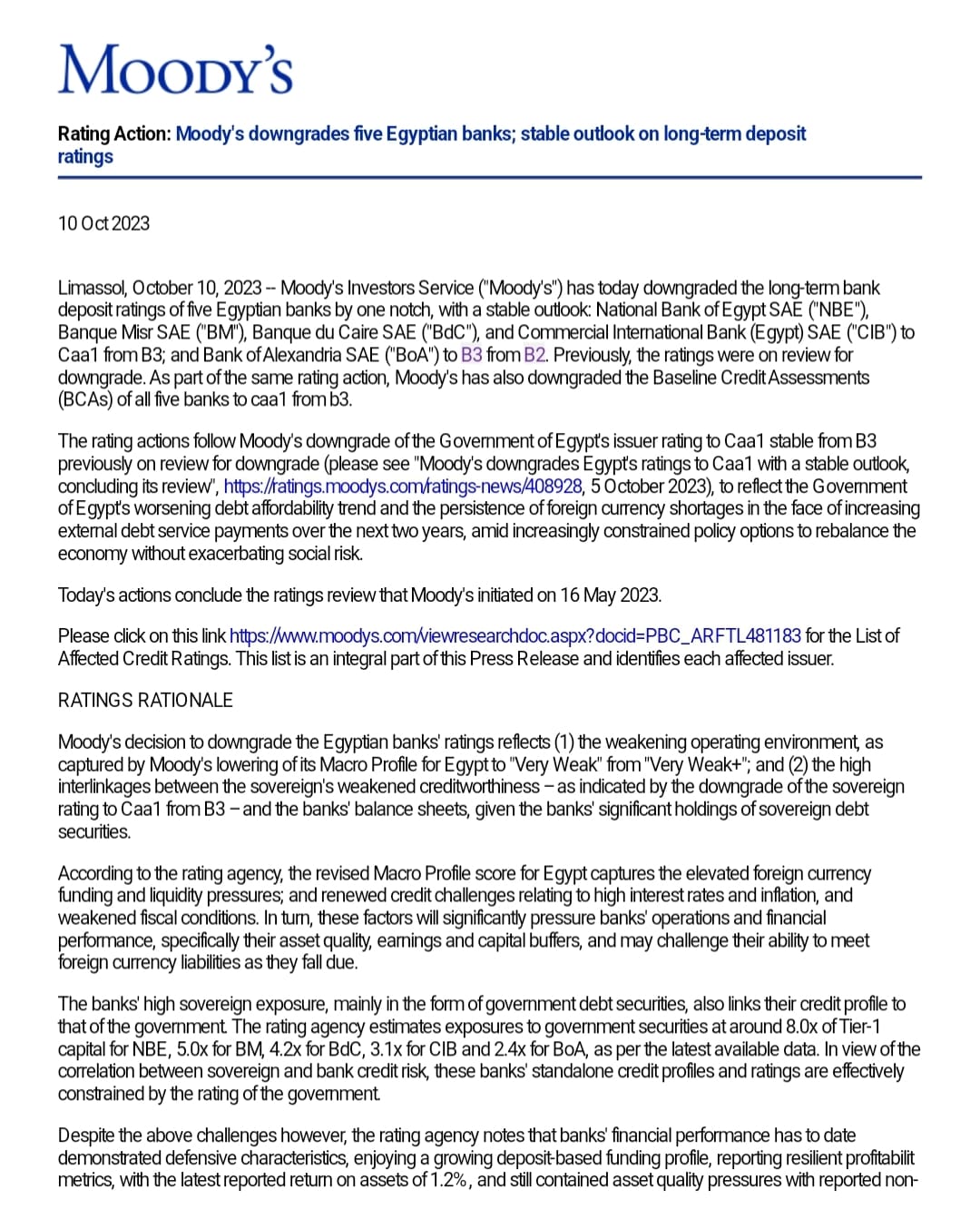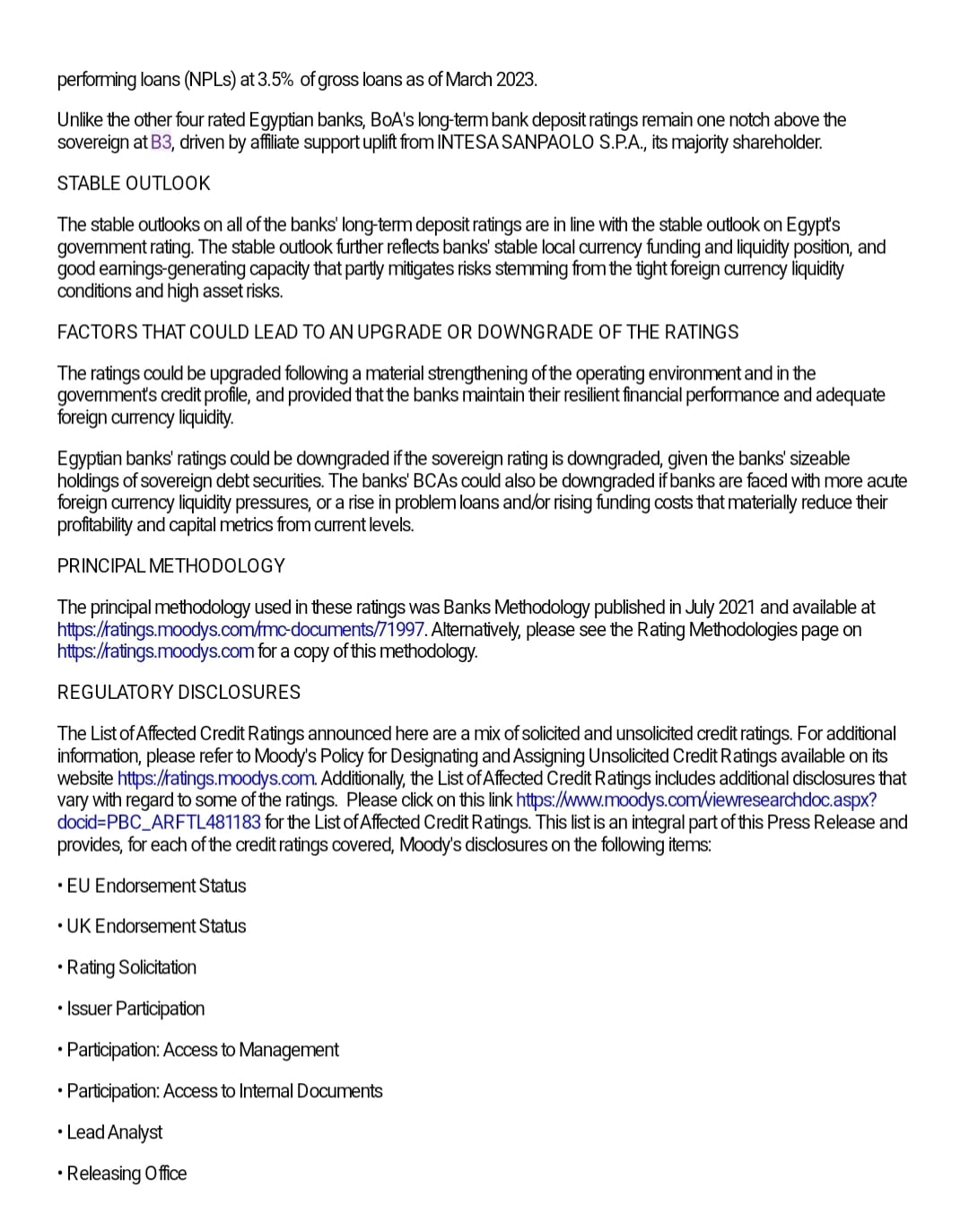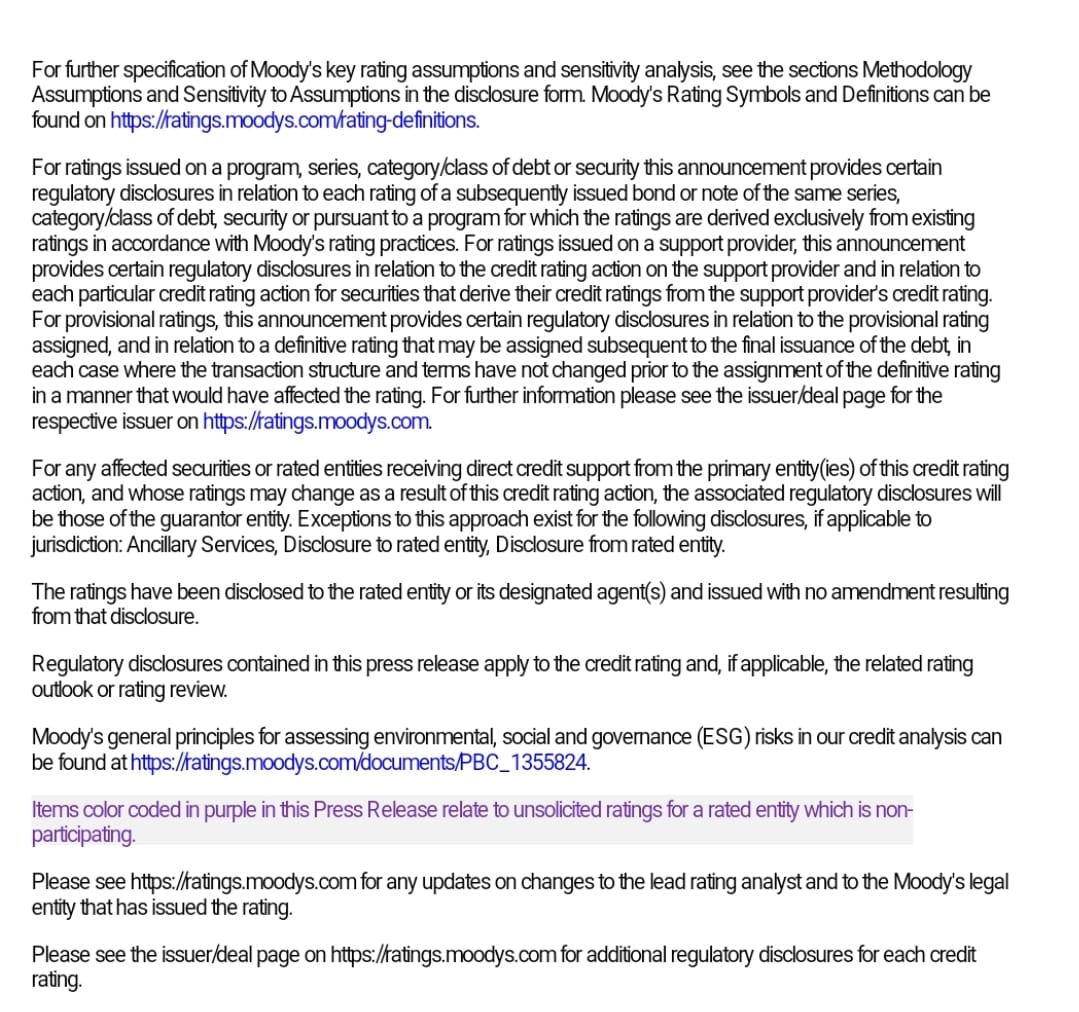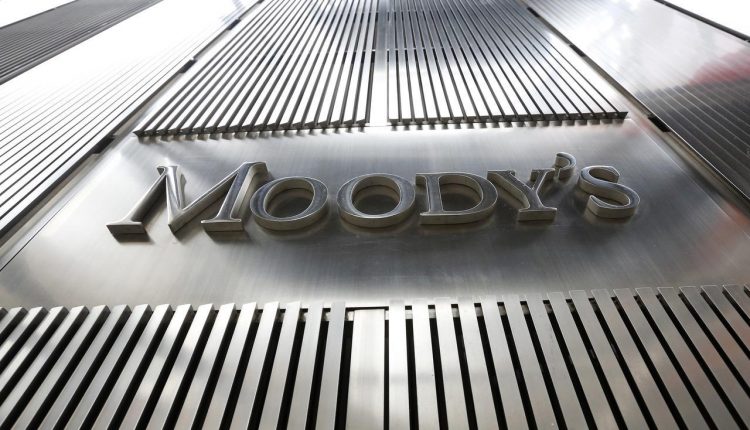Limassol 11 October 2023
Moody’s Investors Service (“Moody’s”) has downgraded the long-term bank deposit ratings of five Egyptian banks by one notch, with a stable outlook:
National Bank of Egypt SAE (“NBE”), Banque Misr SAE (“BM”), Banque du Caire SAE (“BdC”), and Commercial International Bank (Egypt) SAE (“CIB”) to Caa1 from B3; and Bank of Alexandria SAE (“BoA”) to B3 from B2.
Previously, the ratings were on review for downgrade. As part of the same rating action, Moody’s has also downgraded the Baseline Credit Assessments (BCAs) of all five banks to caa1 from b3.
The rating actions follow Moody’s downgrade of the Government of Egypt’s issuer rating to Caa1 stable from B3 previously on review for downgrade (please see.
“Moody’s downgrades Egypt’s ratings to Caa1 with a stable outlook, concluding its review”, https://ratings.moodys.com/ratings-news/408928, 5 October 2023), to reflect the Government of Egypt’s worsening debt affordability trend and the persistence of foreign currency shortages in the face of increasing external debt service payments over the next two years, amid increasingly constrained policy options to rebalance the economy without exacerbating social risk.
Today’s actions conclude the ratings review that Moody’s initiated on 16 May 2023.
Please click on this link https://www.moodys.com/viewresearchdoc.aspx?
RATINGS RATIONALE
Moody’s decision to downgrade the Egyptian banks’ ratings reflects (1) the weakening operating environment, as captured by Moody’s lowering of its Macro Profile for Egypt to “Very Weak” from “Very Weak+”; and (2) the high interlinkages between the sovereign’s weakened creditworthiness – as indicated by the Contents Moody’s downgrades five Egyptian banks; stable outlook on long-term deposit ratings
downgrade of the sovereign rating to Caa1 from B3 – and the banks’ balance sheets, given the banks’ significant holdings of sovereign debt securities.
According to the rating agency, the revised Macro Profile score for Egypt captures the elevated foreign currency funding and liquidity pressures; and renewed credit challenges relating to high interest rates and inflation, and weakened fiscal conditions. In turn, these factors will significantly pressure banks’ operations and financial performance, specifically their asset quality, earnings and capital buffers, and may challenge their ability to meet foreign currency liabilities as they fall due.

The banks’ high sovereign exposure, mainly in the form of government debt securities, also links their credit profile to that of the government. The rating agency estimates exposures to government securities at around 8.0x of Tier-1 capital for NBE, 5.0x for BM, 4.2x for BdC, 3.1x for CIB and 2.4x for BoA, as per the latest available data. In view of the correlation between sovereign and bank credit risk, these banks’ standalone credit profiles and ratings are effectively constrained
by the rating of the government.
Despite the above challenges however, the rating agency notes that banks’ financial performance has to date demonstrated defensive characteristics, enjoying a growing deposit-based funding profile, reporting resilient profitability metrics, with the latest reported return on assets of 1.2%, and still contained asset quality pressures with reported non-performing loans (NPLs) at 3.5% of gross
loans as of March 2023.

Unlike the other four rated Egyptian banks, BoA’s long-term bank deposit ratings remain one notch above the sovereign at B3, driven by affiliate support uplift from INTESA SANPAOLO S.P.A., its majority shareholder.

STABLE OUTLOOK
The stable outlooks on all of the banks’ long-term deposit ratings are in line with the stable outlook on Egypt’s government rating. The stable outlook further reflects banks’ stable local currency funding and liquidity position, and good earnings-generating capacity that partly mitigates risks stemming from the tight foreign currency liquidity conditions and high asset risks.








